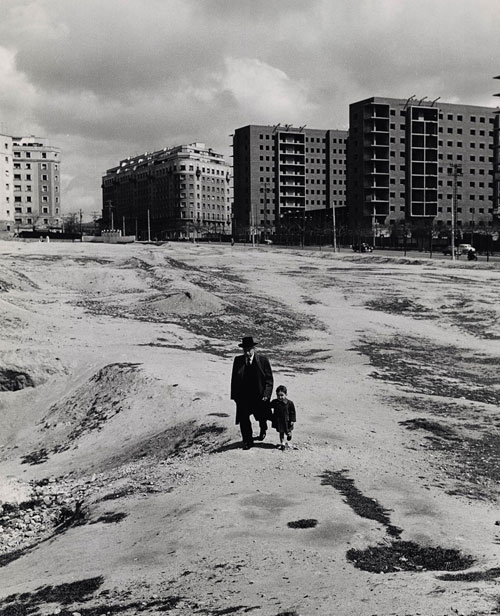Until 29th October the Colectania Foundation in Barcelona displays the works of one of the most influential Catalan photographers of the ´50s and ´60s, Joan Colom. The photos were bought by the Colectania Foundation in 2004 from the gallery owner and art critic Joseph Maria Casademontwas.

No doubt, pphotography is one of the most effective ways of recording historical eventsa as well as everyday life through fashion, objects, postural positions, landscapes etc.,. This is one of et main reasons why the photographic archives are so appreciated both by the historians and art lovers. Colom’s pictures reflect a peculiar time of the Barcelona neighborhood Raval, known as Barrio Chino.
Colom was a master in capturing everyday life of marginal part of society. He managed to carry out a true social chronicle of a neighbourhood then famous only for its prostitution. The pictures stand out for an unbelievable realism. This is quite impressive if we consider that Colom took the picture in a very discrete way and that most of the times he had to hide the camera. Even though he was able to portrait the Raval’s society and transmit through the pictures the both the misery of an era as well as a poetical innocence reflected in children’s portraits
Hi spictures are also poetic and able to provoke oa nostalgia of a disappeared Barcelona, with streets and architecture that do not exist anymore, and a small-town beauty that is only in the individual memory and in these amazing photographs.
Joan Colom was born in Barcelona in 1921. He studied accounts and began in a self-taught photography in the 50´s. In 1957 he joined the Photographic Association of Catalonia and early 60´s he became a founding member of Art group The Mussol, a period when he does most of the photographs displayed with Ignasi Marroyo, by who two photographs are shown.
For further info http://www.colectania.es/index.php?i=1&p=2
Until 29th October the Colectania Foundation in Barcelona displays the works
of one of the most influential Catalan photographers of the ´50s and ´60s, Joan Colom. The photos were bought by the Colectania Foundation in 2004 from the gallery owner and art critic Joseph Maria Casademontwas.
No doubt, pphotography is one of the most effective ways of recording historical eventsa as well as everyday life through fashion, objects, postural positions, landscapes etc.,. This is one of et main reasons why the photographic archives are so appreciated both by the historians and art lovers. Colom’s pictures reflect a peculiar time of the Barcelona neighborhood Raval, known as Barrio Chino.
Colom was a master in capturing everyday life of marginal part of society. He managed to carry out a true social chronicle of a neighbourhood then famous only for its prostitution. The pictures stand out for an unbelievable realism. This is quite impressive if we consider that Colom took the picture in a very discrete way and that most of the times he had to hide the camera. Even though he was able to portrait the Raval’s society and transmit through the pictures the both the misery of an era as well as a poetical innocence reflected in children’s portraits.
 Nancy Guzman
Nancy Guzman
This exhibition is a good way of seeing how the passing of time creates urban changes that condition traditions, so if you are in apartments in Barcelona go visit the Colectania Foundation and get to know the Raval´s history.

 English
English